Shaping the Body
Since the headstock is to be angled back on this guitar, two somewhat tricky cuts needed to be made. Since we did not have a band saw at this point, these would be cut by hand. We wanted to do this while the headstock still had a square shape, so that we could draw lines on each side to follow with the hand saw. We first made a rough cut to get the head stock close to its final width.
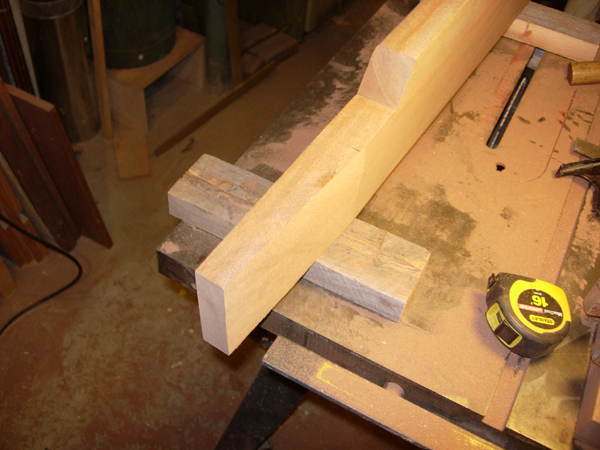
Rough cut for headstock width
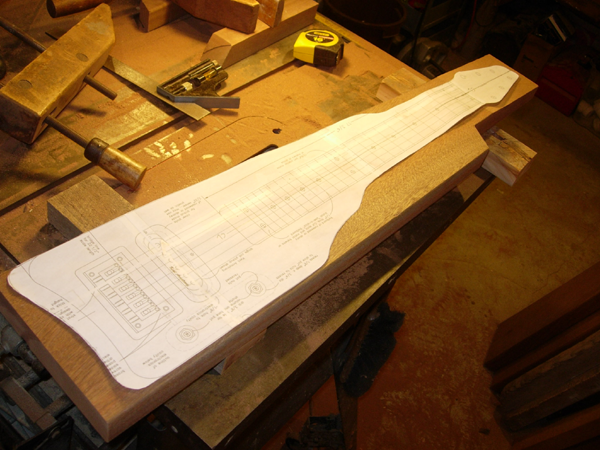
Rough cut for headstock width
After drawing some lines on the headstock area to follow, we used a nice Japanese style hand saw with a thin, flat blade to make the parallel cuts. This saw cuts on the pull stroke, and, being new and sharp, it worked quite well.
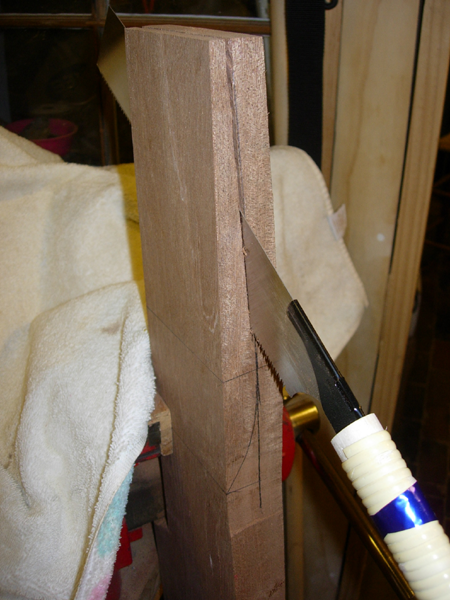
Cutting the headstock to proper thickness and angle
The next step was to cut the arc that runs from the bottom of the guitar up to the bottom of the thinner headstock. We started to try this with a small coping saw, but it quickly became obvious that this was not going to work well. The coping saw just wanted to wander too much. After some puzzling, we ended up using our radial arm saw, with the blade turned 90 degrees from its normal position. As the next two pictures show, we used it sort of like a planer, lowering the blade bit by bit for each pass. It made a lot of sawdust, but ended up working well. Some sanding would be required, but it produced a nice arc.
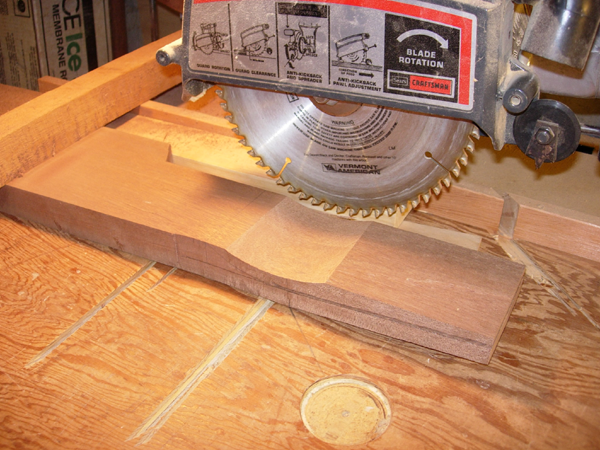
Cutting the headstock to body arc
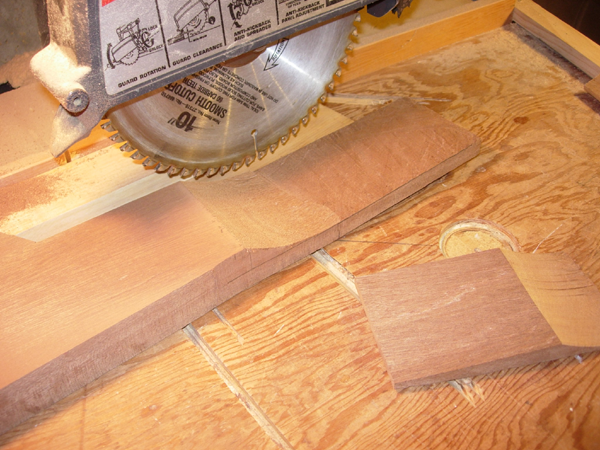
Cutting the headstock to body arc
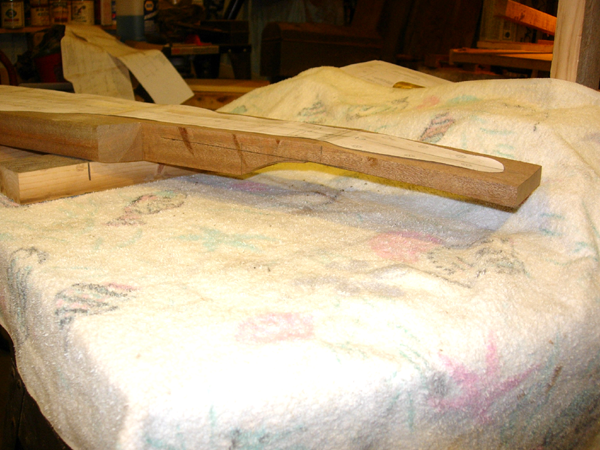
The basic headstock rough cut
Once the headstock was roughed in, we proceeded to cut out the rest of the final body shape. Again, no band saw, but my trusty jig saw did a pretty decent job, considering the thickness of the board (still, really hoping to get a bandsaw someday) EDIT: We have one now!.
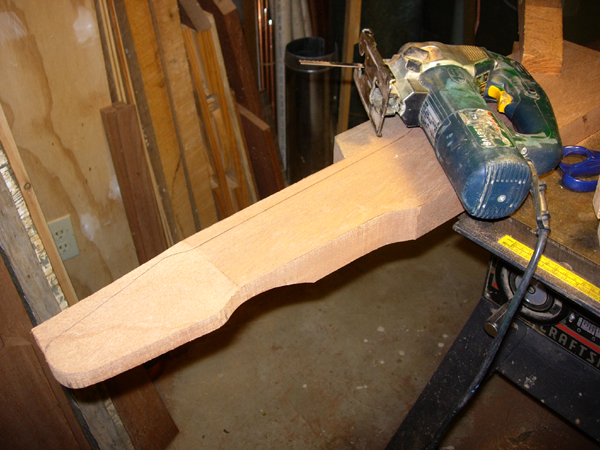
Cutting out the body shape
After cutting out the shape, we returned to my radial arm saw, which has the ability to become a small vertical drum sander. After sanding the edges of the body, it is starting to look pretty decent!

Sanding the edges

Time for another mock up!
While moving through these steps, we had been working on a plan for the fretboard. We had actually ordered a peel-and-stick printed fretboard, but at this point had decided that we wanted to try something more substantial that would look better. We thought about trying to use a piece of 1/4" mahogany with some kind of lighter wood inlayed into slots, sort of like actual frets, but was not sure we could get enough contrast out of that. Plus, we weren't confident that we could get the inlays accurate enough to look good. We came up with a different plan...


